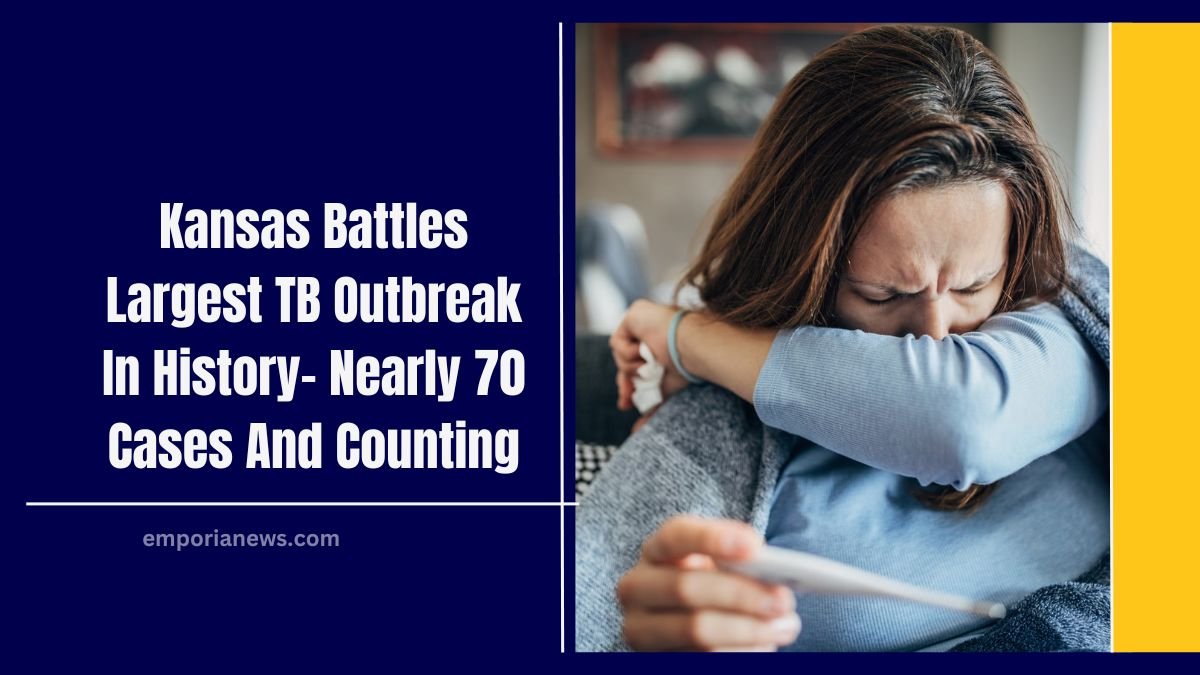Kansas is grappling with an unprecedented tuberculosis (TB) outbreak, with 67 active cases and 79 latent infections recorded in the Kansas City metro area as of early 2024.
The Kansas Department of Health and Environment (KDHE) has confirmed that this is the largest TB outbreak in the state’s history, predominantly affecting Wyandotte County and Johnson County.
Despite the severity, officials emphasize that the risk to the general public remains low, with robust measures in place to control the spread.
The Scale of the Kansas TB Outbreak
This outbreak is remarkable not only for its size but also for its potential public health implications. Here’s a breakdown of the numbers:
| Category | Details |
|---|---|
| Active TB Cases | 67 |
| Latent TB Cases | 79 |
| Counties Affected | Wyandotte County, Johnson County |
| Largest Outbreak in History | Confirmed by KDHE |
| Public Risk Level | Very low, according to KDHE |
This outbreak has also highlighted the presence of multidrug-resistant (MDR) TB in Kansas, which poses a significant challenge to treatment protocols.
What is Tuberculosis?
Tuberculosis (TB) is a bacterial infection caused by Mycobacterium tuberculosis. It primarily affects the lungs but can also impact other parts of the body, such as the brain, spine, and kidneys. TB spreads through the air when an infected person coughs, speaks, or sneezes.
Types of Tuberculosis
- Active TB:
- Contagious and symptomatic.
- Requires immediate medical attention and treatment.
- Latent TB:
- Non-contagious and asymptomatic.
- The bacteria remain dormant in the body but can become active later.
Symptoms of Tuberculosis
An active TB infection typically presents the following symptoms:
Lung-Specific Symptoms
- Persistent cough lasting 3 weeks or longer.
- Chest pain.
- Coughing up blood or sputum from the lungs.
General Symptoms
- Fatigue or weakness.
- Unintended weight loss.
- Loss of appetite.
- Chills and fever.
- Night sweats.
Symptoms Based on Affected Body Part
- Lymph nodes: Swelling under the skin, often firm and red or purple.
- Kidneys: Blood in the urine.
- Brain (TB meningitis): Headaches or confusion.
- Spine: Back pain.
- Larynx: Hoarseness.
It’s crucial for anyone experiencing these symptoms to seek medical attention immediately, as early diagnosis can prevent the disease from spreading.
Measures to Combat the Outbreak
The KDHE, along with local health departments, has implemented a comprehensive plan to address the outbreak:
1. Free TB Testing
- Local health departments are conducting TB tests at no cost to identify potential cases.
- Individuals testing positive are further screened to determine whether the infection is active or latent.
2. Free Treatment for Uninsured Patients
- TB treatment is provided free of charge to uninsured individuals or those whose health insurance does not cover the costs.
- Treatment involves a course of antibiotics, which, once started, quickly reduces the patient’s ability to spread the disease.
3. Contact Tracing
- Health officials are working closely with each patient to identify and test their close contacts.
- This proactive approach helps contain the spread of TB and ensures that infected individuals receive timely care.
4. Monitoring and Support
- KDHE has committed to monitoring patients throughout their treatment to ensure adherence to prescribed regimens.
- This support is critical in preventing drug resistance and ensuring effective recovery.
The Multidrug-Resistant TB Challenge
One of the most alarming aspects of the Kansas TB outbreak is the presence of multidrug-resistant TB (MDR-TB).
Between 2019 and 2021, MDR-TB cases surged, with 13 individuals across four low-income households contracting this more severe form of the disease. MDR-TB is resistant to at least two of the most potent TB drugs, making treatment more complex and costly.
Dispelling TB Myths
TB is surrounded by misconceptions, leading to unnecessary fear and stigma. Here’s what you need to know:
- TB is not spread through casual contact:
- Sharing food, drinks, or bedding does not transmit TB.
- It spreads only through airborne droplets from an infected person.
- TB is treatable:
- With antibiotics, active TB infections can be cured, and patients quickly become non-contagious.
- Latent TB is not contagious:
- People with latent TB cannot spread the bacteria to others.
Why This Outbreak is Significant
The Kansas TB outbreak has raised awareness about the ongoing challenges of controlling infectious diseases, even in developed countries. Factors such as poverty, lack of healthcare access, and antibiotic resistance exacerbate the issue.
- Economic Implications: Treating MDR-TB is significantly more expensive than regular TB, putting pressure on public health budgets.
- Public Health Awareness: The outbreak highlights the need for ongoing education and resources to combat TB.
The unprecedented TB outbreak in Kansas underscores the importance of vigilance in public health. With 67 active cases and 79 latent infections, it serves as a stark reminder of the challenges posed by infectious diseases, even in modern healthcare systems.
While the risk to the general public remains low, the presence of multidrug-resistant TB and the potential for further spread necessitate robust response measures.
The KDHE’s commitment to free testing, treatment, and monitoring is a critical step toward controlling the outbreak and protecting vulnerable communities.
As Kansas works to manage this crisis, it also highlights the importance of addressing healthcare disparities and ensuring that all individuals have access to life-saving treatments.
Combating TB requires not only medical solutions but also social and economic support to prevent such outbreaks in the future.




